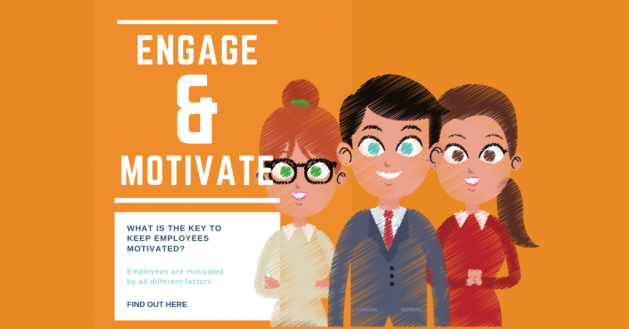Here is the presentation I made based on yesterday’s blog. Let me know what you think. You can also see on Slideshare.net
Tag: Employee Motivation Page 5 of 8
Are there certain people who just can’t be motivated? Are there Wally’s who render the motivation fairy powerless? While I would like to believe that isn’t the case, I have to wonder…
Motivation is Personal
One of the core beliefs that I have is that motivation is very personal. People are individuals with different motivational triggers and drives. While there are basic underlying motivational drives (see 4-Drive Model), those drives impact each of us differently and create a unique motivational profile.
This implies that if one can understand that motivational profile of a person, one should be able to understand what to do to motivate them…right?
That is the implication…however I believe reality is a little different.
The largest part of our business is developing communications for sales incentive plans. We create presentations, develop plan books, and design flash and other forms of communication. We got into this work by accident (one client many years ago asked us to create a “meeting in a box” for his IC plan – the rest, as they say, is history), but now we embrace it and have carved out a niche. That niche is taking highly analytical and dry plan data and making it more interesting, more engaging, and more motivating for the sales representative. Over the past 10 years we have done just this for thousands of plans and hundreds of thousands of participants.
We strive to tell a visual and emotive story with our work. We work hard at capturing the vital information that is important to a sales person and making that information understandable and engaging. I like to think we do a good job – when our clients allow us to. You see, telling a story about incentive compensation and creating captivating visuals to convey that information isn’t easy. It requires that we make choices about what information we share. It means that we may have to simplify the message. It may mean changing how we present and what types of communication that we use. This, for some clients, is easier said than done.
Ok, this is too funny. I think it is real, but even if it isn’t, it is good. Shows you the power of being creative, using different types of media, and having good production…this is what every incentive compensation plan communications needs but rarely gets. Think of the power of this video being about your compensation plan and being introduced to your sales force at your next National Meeting…WOW! Motivation is about more than just the reward – it is about how we communicate, how we actively engage, how we convey the message and get people to not only notice, but care…and maybe even have a little bit of fun!
 Salespeople who are engaged in their roles, who are motivated to succeed, and who’s goals are aligned with the organizational goals have been shown to have a significant impact on helping an organization succeed (Badovick, Hadaway, & Kaminski, 1992). Successful organizations understand this and try to keep their sales employees motivated and engaged through a variety of motivational methods – mostly involving extrinsic rewards.
Salespeople who are engaged in their roles, who are motivated to succeed, and who’s goals are aligned with the organizational goals have been shown to have a significant impact on helping an organization succeed (Badovick, Hadaway, & Kaminski, 1992). Successful organizations understand this and try to keep their sales employees motivated and engaged through a variety of motivational methods – mostly involving extrinsic rewards.
While much has been much written about how extrinsic rewards may have a detrimental effect of on a sales person’s intrinsic motivation (Deci & Ryan, Kohn, or Pink – note: there is also a lot of research on how this extrinsic/intrinsic effect can be mitigated) there is little disagreement on the short-term impact that extrinsic rewards can have on a company’s performance . The short-term benefit of extrinsic rewards assures us that these rewards will be used in businesses no matter what Dan Pink has to say on the topic. However, this does not mean that these types of programs can’t be improved.
Successful organizations and leaders of the future not only need to focus on the optimization of extrinsic reward programs but also on moving other levers within the organization that can drive sales motivation. Using the Four-Drive Model of Employee Motivation (Lawrence and Nohria, 2002) provides a clear framework for how to do this.
Just too funny! Great link to see a short video on how you too can become a great micro-manager…
http://www.dailymotion.com/video/x9btr8_how-to-micromanage-like-a-real-ass_school
 The 4-Drive Model of Employee Motivation’s second drive is the drive to Bond & Belong. The drive is defined by our innate desire to form “close, positive relationships” with people around us. The image of the lone wolf going it alone or the inventor holed up in his workshop are atypical – most people want to bond with others and feel they belong to a group. Here are three tips to increase the B Drive:
The 4-Drive Model of Employee Motivation’s second drive is the drive to Bond & Belong. The drive is defined by our innate desire to form “close, positive relationships” with people around us. The image of the lone wolf going it alone or the inventor holed up in his workshop are atypical – most people want to bond with others and feel they belong to a group. Here are three tips to increase the B Drive:
This was our most viewed slideshare presentation with over 14,000 views – I’ve now turned it into a 4-minute youtube video….with music and everything. Hope you enjoy and please forward on to anyone you think would benefit from watching.
Oak Ridge Hotel and Conference Center get motivation – it isn’t about a single program or special one-day events. . . it is about creating a culture that engages and motivates.
Here is a short video that highlights some of what we found out when we talked with them and asked them. . . “What Motivates You?”
A few weeks ago Susan and I spent the day interviewing 11 employees at Oak Ridge Hotel & Conference Center in Chaska, MN (see Oak Ridge Part 1 here). We had observed that Oak Ridge had “gotten the formula right on employee motivation” and wanted to probe more to find out how. From our original findings, we highlighted five things that stood out: 1) leadership counts, 2) It is not about the money, 3) It is about the team, 4) Genuine recognition rejuvenates and 5) It is all about appreciating people. I’m taking a different approach this time, looking at it from the 4-Drive Model and seeing how each of the drives showed up in the 11 interviews.




